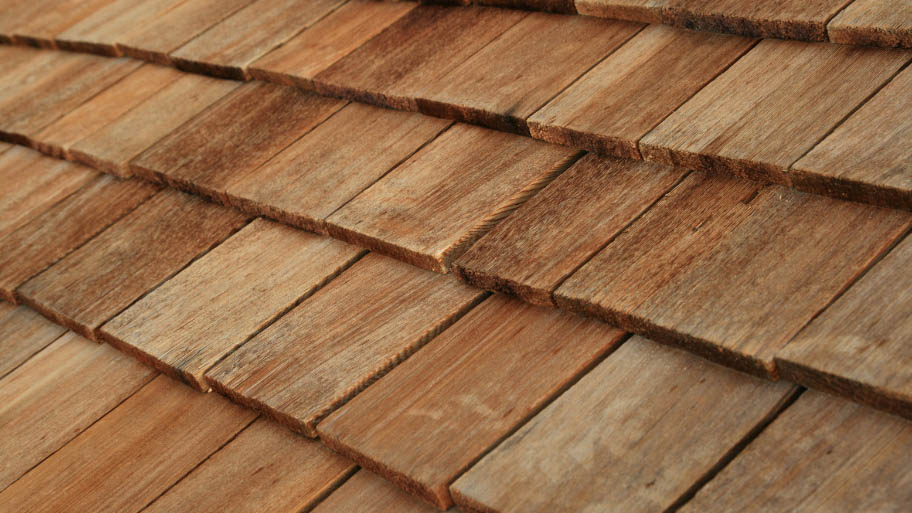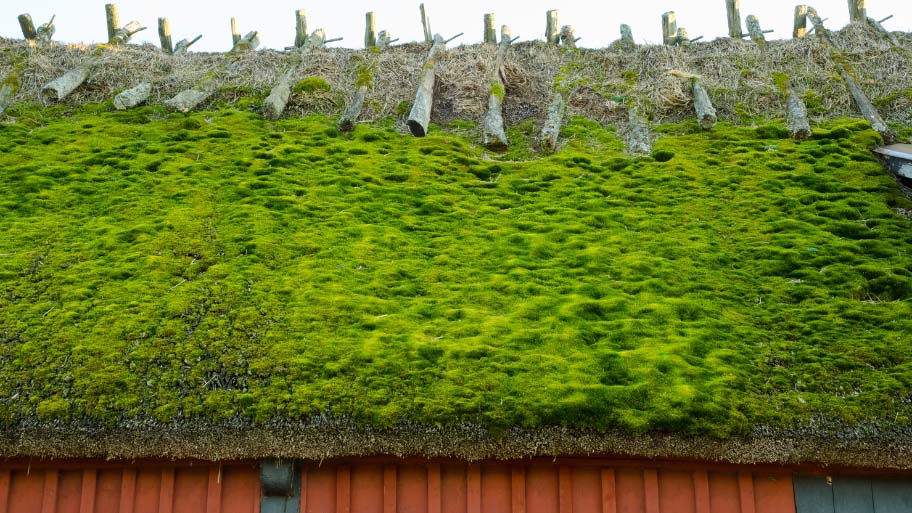Roof Repair Tips: How to Identify and Fix Common Issues
Facing roof repairs can be daunting, but it doesn’t have to be a nightmare. Early intervention can prevent the minor wear and tear on your roof from turning into major problems.
Whether you’re a DIY enthusiast or just looking to understand more about your roof’s needs, the right guidance can simplify the process.
This article aims to demystify roof repairs, offering straightforward roof repair tips to help you maintain your roof’s integrity, ensuring safety and lasting quality.
Essential Roof Repair Tips for Homeowners

Understanding the importance of timely roof maintenance, let’s dive into the practical tips that can significantly improve your roof’s condition. Here are key strategies every homeowner should consider:
1. Match Your Shingles Perfectly
Start with the basics – match your shingles for a flawless repair. Beyond just the looks, the right shingles ensure your roof functions uniformly, resisting weather elements effectively. Aim for a match in color, material, and quality to enhance your roof’s durability and performance.
2. Use Proper Safety Gear (like Rubber-soled Shoes)
Roof work is high above ground, so prioritize your safety. Wear rubber-soled shoes for better traction and consider safety harnesses for extra security. Whether your roof is steep or flat, safety measures are essential, especially under unpredictable weather conditions.
3. Regularly Check Flashing and Vents
The integrity of your roof heavily depends on well-maintained flashing and vents. Conduct routine inspections to identify and rectify signs of deterioration like rusting, cracking, or loosening. Timely upkeep of these components is key to preventing costly water damage and ensuring the overall functionality of your roof.
4. Proper Nail Head Treatment
Leaks often originate from improperly sealed nail heads. To avoid this, make sure that nails are set correctly – neither protruding nor driven too deep. Apply a durable sealant over nail heads to block moisture entry and avert rust, thus extending the lifespan of your roof repairs.
5. When to Use Caulk (and When Not To)
While caulk can effectively seal small cracks and gaps, it should not be overused or relied upon for larger issues. Utilize caulk for quick, temporary solutions, steering clear of its application in major repair tasks or areas with heavy water exposure. For more substantial concerns, seeking professional advice is the best course to ensure your roof’s integrity.
6. Deciding Between Repair vs. Replacement
Understanding when to repair your roof or opt for a complete replacement is vital. Minor issues like a few leaky spots or damaged shingles often require repairs, extending your roof’s lifespan without the need for a total overhaul.
However, if you’re facing extensive damage, persistent leaks, or if your roof is nearing the end of its expected life (typically 20-30 years), replacement might be the more economical and safer choice. Evaluating the extent of damage and considering the age of your roof can guide this important decision.
7. Choosing the Right Contractor
The success of roof repair or replacement heavily depends on the contractor you choose. Look for licensed, insured, and experienced professionals with positive reviews and a solid track record. Don’t hesitate to ask for references, proof of insurance, and detailed quotes.
A reputable contractor will not only provide a fair estimate but also ensure the work is done to a high standard, complying with building codes and manufacturer specifications.
8. Knowing When It's Time for Professional Roofing Help
While fixing minor roof issues yourself can seem cost-effective, understanding the right moment to seek professional help is key to preventing bigger problems. If you encounter major concerns like significant leaks, structural damage, or persistent issues after trying to fix them yourself, it’s wise to contact expert roofers.
Also, tasks that involve working at great heights or with specialized equipment are best left to professionals to ensure safety and quality.
Understanding Roof Damage: Common Causes and Signs
To keep your roof in great condition, it’s crucial to spot the early signs of trouble. In this section, we’ll delve into the common causes of roof damage and guide you through the warning signs to look out for. By staying informed, you can take timely action to protect your home.
1. Wind Impact
After a storm, check your roof for any signs of wind damage like loose or missing shingles. If shingles are out of place or damaged, it could signal that the wind has compromised your roof’s integrity.
2. Water Damage
Persistent moisture can be a roof’s nemesis. Watch for any unusual stains on your ceilings or walls and musty odors in your home, as these can indicate a leaky roof in need of attention.
3. Snow and Ice
Heavy snowfall and ice build-up can strain your roof. Ice forming at the roof’s edge or water marks beneath the overhang might suggest the formation of ice dams, needing prompt action.
4. Sun and Heat
Long-term exposure to the sun can degrade your roof’s materials. If you notice your shingles are fading, cracking, or warping, it’s time to assess the sun’s impact on your roof.
5. Moss and Algae Accumulation
Over time, these natural elements can seriously undermine your roof’s condition. If you notice green or black streaks, it’s time to tackle the moss or algae growth before it leads to further damage.
6. Tree and Limb Interference
Regularly trim branches near your roof to prevent abrasion or damage. Especially after storms, inspect your roof for any impacts caused by fallen limbs or scattered debris, ensuring your roof remains intact and secure.
Recognizing these signs early and understanding what causes them can empower you to take the right steps in maintaining your roof’s health. Regular inspections and prompt action when issues are spotted will keep minor problems from turning into major concerns.
Identifying Problems With Your Roof
Detecting issues early is crucial for maintaining a robust roof. Follow these steps to uncover and address potential roofing problems effectively:
- Seasonal Inspections: Engage in bi-annual roof inspections, ideally in spring and fall, to identify any emerging issues. This proactive approach allows you to spot and rectify signs of wear before they escalate.
- Checking for Interior Leaks: Keep an eye on your attic and ceilings, especially following significant rainstorms, for any signs of water seeping through. Early detection of leaks is key to avoiding major damage inside your home.
- Gutter Maintenance: Regular gutter maintenance is crucial to avoid blockages that could cause water to overflow and damage your property. Make sure your gutters are clear of debris and that downspouts effectively channel water away from your home's foundation, maintaining its structural integrity.
- Structural Assessment: Monitor for any structural issues, such as sagging or uneven roof lines, which may indicate underlying problems. Check for pooled water or damaged roofing materials that could signify poor drainage or material failure.
- Consult a Professional: When signs of significant damage are evident or if you’re uncertain about the roof's condition, seek a professional roofing inspection. Expert analysis can determine the extent of damage and the best course of action, be it repair or replacement.
By actively engaging in these inspection and identification processes, you safeguard your home’s condition and prevent the necessity for more drastic measures in the future. It’s not just about spotting damage but understanding when to take action and when to seek expert advice.
A Guide to Roofing Materials and Their Impact on Repairs
Choosing the right roofing material is not just about aesthetics; it’s about longevity and ease of maintenance. Each material has its own set of characteristics that affect the frequency and type of repairs needed. Let’s explore the common roofing materials and how they influence repair decisions:
1. Asphalt Composition Shingles
Popular for their affordability and durability, asphalt shingles are also relatively straightforward to repair. They can withstand various weather conditions, but over time, they may become brittle and lose granules, necessitating repairs or replacement.
2. Wood Shakes or Shingles
Offering a natural look, wood shingles require more maintenance to prevent rot, mold, or insect damage. Regular inspections are essential, especially in moist climates, to replace damaged shingles and prevent widespread deterioration.
3. Metal Roofing
Durable and weather-resistant, metal roofing is a long-lasting choice that requires little upkeep. Despite its durability, it’s not without vulnerabilities; for example, it can suffer from corrosion or get dented by hail. Such damage should be dealt with quickly to maintain the roof’s structural integrity.
4. Tile Roofs
Clay or concrete tiles offer a distinct and durable roofing solution, often lasting for many years. Yet, they can crack or break due to impact or wear and require careful handling during repairs to avoid damage to adjacent tiles.
5. Slate Roofs
Slate is extremely durable and can last over a century if maintained properly. Its main challenges are weight and the need for specialized repair skills when tiles break or become dislodged.
6. Flat Roofing Systems
Predominantly seen on contemporary and commercial structures, flat roofing presents specific issues such as the accumulation of standing water and potential membrane deterioration. To avert leakage and enhance durability, it’s essential to conduct consistent inspections and upkeep.
Understanding the specific needs and repair methods for each roofing material helps homeowners make informed decisions about their roof’s care. Whether it’s choosing materials for a new roof or maintaining an existing one, considering the impact on future repairs is essential.
This knowledge not only aids in immediate problem-solving but also in planning for long-term roof health and functionality.
Cost Considerations for Roof Repair
Understanding the financial aspects of roof repair is key to budgeting wisely. The price of fixing your roof can vary due to a range of factors, and having a grasp on these elements will empower you to make budget-friendly choices.
Let’s dive into what affects the cost of roof repairs and how you can manage these expenses smartly:
Your selection of roofing materials plays a crucial role in repair costs. While asphalt shingles offer an economical repair option, materials like slate or tile may entail higher expenses due to their premium quality and installation complexity.
The repair bill is directly tied to how extensive the damage is. Small, localized problems are usually less expensive to fix than widespread or severe damage, which might require a comprehensive overhaul or even a roof replacement.
The intricacy of the repair task will dictate the labor charges. Jobs involving specialized materials or high-skill levels can increase the overall cost, highlighting the importance of getting skilled labor for quality work.
Consider the roof’s design and accessibility, as complex or hard-to-reach areas may necessitate additional time, labor, and safety measures, impacting the final cost.
Don’t forget to check your insurance policy and roofing warranty. Some repairs might be covered, potentially saving you money.
Crafting a budget for your roof repair is simpler than it seems. Getting to know the main factors that drive repair costs and engaging in regular maintenance can help you keep expenses in check and maintain your roof’s health.
This approach not only saves you money in the long run but also extends the life of your roof.
Timely Maintenance: When Should You Repair Your Roof?
Taking care of your roof is more than just fixing it when something goes wrong; it’s about staying one step ahead to prevent problems in the first place. Scheduling roof repairs wisely not only saves you money but also ensures your roof’s health for years to come.
Let’s dive into identifying the perfect times for routine maintenance and why it’s essential for your roof’s longevity.
Perform routine inspections twice a year, in spring and fall. These seasons are ideal for spotting damage from the summer heat or winter cold, allowing you to address issues before extreme weather exacerbates them.
Always inspect your roof after severe weather, like heavy storms, hail, or strong winds. Immediate checks can reveal damages that might not be visible from the ground and allow for quicker repairs.
Keep an eye out for any indicators of deterioration, such as absent shingles, water intrusion, or aging signs on your roof. Proactively managing these issues can help avert extensive and expensive repairs in the future.
Engage a roofing professional for an annual inspection. They can spot potential problems you might miss and provide advice on necessary repairs or maintenance.
Keeping ahead with your roof maintenance not only smooths out the repair process but also keeps unexpected costs at bay. Regular checks mean your roof stays in top form, shielding your home against weather challenges without last-minute surprises.
DIY Roof Repair: What You Can and Should Do Yourself
While regular professional inspections are crucial, especially in areas like Perry, IA, where weather conditions can vary, there are several maintenance and repair tasks that homeowners in Perry, IA, and the surrounding areas can safely undertake to keep their roof in good condition.
Understanding what you can do yourself and when to call in a professional can save you time and money.
- Basic Inspections and Cleaning
Basic Inspections and Cleaning: You can conduct visual checks to spot any shingles that are absent, deteriorated, or weathered. Clearing out gutters and discarding any debris accumulated on the roof helps avert moisture-related damage and contributes to the longevity of your roofing system.
- Minor Repairs
For those with a DIY spirit, addressing minor issues such as replacing a few shingles or patching up small leaks can be done with the right tools and a bit of know-how. Online resources, like tutorials and guides, are great aids for navigating these basic repairs, empowering you to maintain your roof’s condition effectively.
- Sealing and Caulking
Sealing around vents, chimneys, and flashing is a practical way to block leaks and protect your home. This task is well within reach for those with some DIY experience in roofing, requiring just some basic tools and sealant to make a significant impact on your roof’s weather resistance.
- Understanding Your DIY Boundaries
While many roof issues can be handled with a DIY approach, it’s crucial to know when a job is beyond your skill set. Extensive damage, structural concerns, or repairs that demand specific expertise should prompt you to seek professional roofing services. This ensures that complex problems are resolved safely and effectively.
- Safety First
Always prioritize safety when considering DIY roof repair. Use proper safety equipment and never work on the roof in wet, icy, or windy conditions.
By balancing DIY efforts with professional expertise, homeowners can maintain their roof’s integrity without compromising on safety or quality. Understand your abilities and limits to ensure your roof gets the care it needs.
The Professional Touch: Knowing When to Hire Experts
Tackling minor repairs yourself can be satisfying and cost-effective, but for homeowners in Perry, IA, and the surrounding areas, certain roofing challenges demand expert attention. Recognizing the scenarios that require a professional roofer’s touch not only safeguards your home but also ensures the longevity and performance of your roof.
- Complex Repairs
When your roof endures significant damage or structural issues, expert intervention is crucial. Trained professionals are equipped to navigate complex repairs with precision, ensuring your roof’s safety and functionality.
- Safety First
Roofing tasks, especially on elevated or sloped surfaces, carry inherent dangers. Professional roofers are not only trained in safe practices but also come equipped with the necessary gear to minimize accident risks, ensuring a safe work environment.
- Guaranteed Quality
Opting for a trusted roofing company provides peace of mind with the assurance of high-quality workmanship. These experts offer a blend of precision and dependability that DIY efforts might not match, backed by warranties that protect your investment.
If your roofing issues are beyond DIY fixes, consider getting in touch with Affordable Quality Exteriors. Our expert team is ready to deliver the dependable service needed to maintain your roof’s top condition, ensuring your home remains safe and well-protected.
Categories
Recent Posts

ABOUT THE AUTHOR
Billy Lee Heinkel II is the heart and soul of Affordable Quality Roofing & Exteriors in Perry, Iowa. With a rich experience spanning over 20 years, Billy and his skilled team specialize in roofing, siding, and other exterior services. They’re known for their top-quality work and dedication to customer satisfaction. Billy’s strong ethics and focus on excellent service ensure every project is handled with care, delivering outstanding results for all their clients’ exterior needs.





























